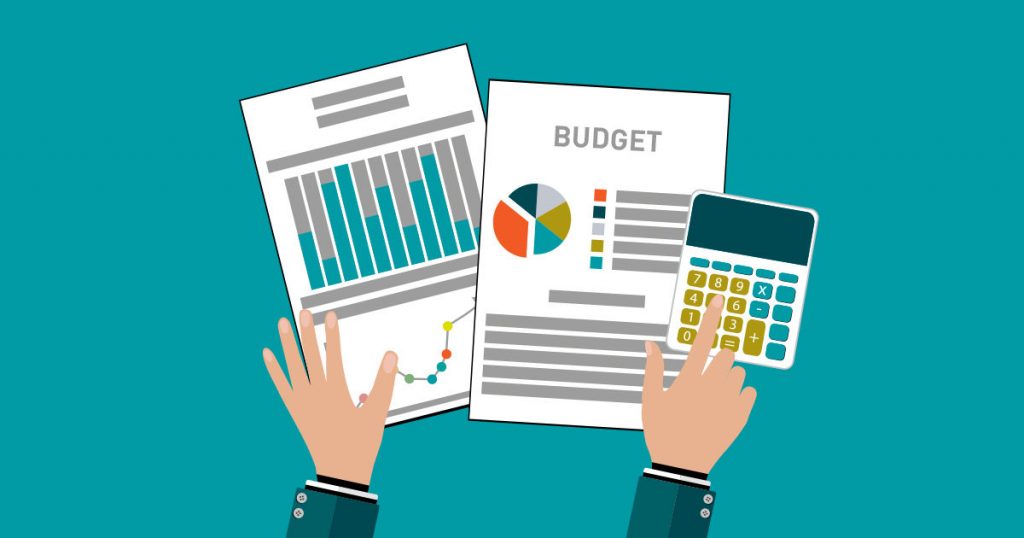In business, it is crucial to manage expenses and allocate resources in a way that benefits the company. This makes the process of project budget management extremely important. By taking a strategic and organized approach to budget management, businesses can ensure their projects stay on track and within budget.

Project budgeting is essential for businesses because it allows them to track their spending and ensure that they are staying within their allotted budget. This is especially important for larger projects where costs quickly spiral out of control.
It helps businesses to forecast future expenses and make better long-term financial decisions. By having an accurate estimate of how much a project will cost, companies can plan for the associated costs and make sure that they can afford them.
No organization can afford to ignore the financial implications of its projects. By taking a managerial approach to budget management, organizations can ensure that their projects stay on track financially while still achieving their objectives.
This blog post will explore some tips for effective budget management and provide examples of how it can be done in practice.
Why Do You Need Project Budget Management?

Project budget management is a critical part of every project. The project budget is a key document that helps ensure that the project stays on track financially. It can track actual spending against the planned budget, identify potential cost overruns, and help decide where to allocate resources to keep the project on schedule and within budget constraints.
Project budget management requires regular updates and forecasting to accommodate any changes in scope or schedule. The budget should be adjusted as the project progresses to reflect actual costs incurred and changes in the overall plan for the project.
Effective project budget management requires good communication between all stakeholders, including those responsible for managing costs, those who need accurate information to decide about the project, and those who will be affected by any changes in budget or schedule.
Here are the major benefits of effective project budget management:
- It allows you to track your spending against your goals
- It helps you make more informed decisions about where to allocate your resources
- It keeps everyone updated regarding budget expectations
- It prevents cost overruns and enables you to stay on track financially
- It facilitates better communication and coordination between team members
- It allows you to assess whether a project is worth pursuing from a financial standpoint
Top 6 Ways to Handle Project Budget Management

Whether you are a corporate project manager or small business owner, you know that having a project budget is necessary for the success of your project. It isn’t easy to make informed decisions without accurate budget information and ensure that your project stays on track.
Here are the top six ways to manage project budgeting effectively:
1. Keep Track of Expenses
Tracking expenses is an integral part of budget management for a few reasons. First, it allows you to stay on top of how much money you’re spending and where it’s going. This will keep you within budget and avoid overspending on certain items. Second, tracking expenses can help you identify areas where you might be able to save money. By reviewing your past expenses, you may notice that there are some areas where you could reduce costs without significantly impacting the outcome of your project.
Finally, tracking expenses can also help with tax preparations. By having a record of all your project-related expenses, you can more easily figure out what deductions or credits are available.
2. Know Your Priorities
Knowing your priorities is essential during project budget management because it will help you focus on the most important aspects of your project and make the best use of your resources.
It’s essential to set priorities because a project can have many aspects that need attention, and it might be challenging to balance everything equally. By focusing on the most crucial tasks first, you’ll be able to make more progress on your project and avoid wasting time on less important tasks.
Setting priorities helps you stay within your budget by allowing you to allocate more resources to the most critical tasks. It ensures that your project is completed on time and within budget.
3. Create a Realistic Budget
You should always create a realistic budget during project budget management. Perhaps you’re trying to rein in costs and stay within a specific financial limit. Or maybe you’re aiming to increase your chances of getting funding from investors or lenders. Whatever the reason, creating a detailed and accurate budget is an essential step in successful project management.
There are several key benefits to creating a realistic budget:
1. You can avoid costly mistakes: If your budget is unrealistic, you may end up making pricey mistakes that could have been avoided easily. For example, if you underestimate the cost of materials, you could end up going over budget.
2. You can keep costs under control: By having a realistic budget in place, you can better keep track of spending and stay on track to meeting your financial goals. This is especially important for projects with tight budgets.
3. You can win over investors and lenders: A well-crafted budget is key in convincing investors or lenders to invest or lend money to your project. A realistic budget shows that you’ve done your homework and are serious about managing your project’s finances.
Creating a realistic budget is a critical step in successful project management. By understanding the benefits of doing so, you can better manage your project’s finances and increase your chances of success.
Sign up to try the bestproject budgeting software and set realistic budgets for your projects here.
4. Set limits on spending and stick to them
Setting limits on spending during project budget management is essential for several reasons:
- It ensures that the project stays within its financial constraints.
- It helps to ensure that funds are used wisely and appropriately.
- Setting spending limits can help keep a project on track by preventing frivolous or unnecessary expenditures.
When setting spending limits, it is important to consider the project and the expected needs of the team. For example, if a project is expected to last for several months, it may be necessary to limit monthly spending to stay within the overall budget. Similarly, if a project requires specialized equipment or materials, it may be required to set a limit on how much can be spent on individual items.
By setting spending limit, project managers can help to ensure that their team stays within budget and stays on track to complete the project successfully.
5. Communicate with team members about budgetary constraints and expectations upfront
Communicating budgetary constraints to team members ensures everyone is aware of the limitations that have been placed on the budget. This way, team members can make informed decisions about what they can and cannot do within the budget constraints.
Additionally, communicating budgetary constraints allows team members to develop alternate plans if their original plan falls outside the budgetary restrictions. Ultimately, communication helps teams work together more efficiently towards a common goal.
6. Compare actual spending to the budget
Budget management is a key component of successful project management. Project managers can proactively identify and manage potential cost overruns by comparing actual spending to the budget. This comparison can reveal important insights into the effectiveness of the project budget. When projects come in under budget, it may be possible to redirect savings to other areas or improve the project schedule. Alternatively, if a project is over budget, additional funding may need to be secured, or scope adjustments may need to be made.
In short, comparing actual spending to the budgetary limits helps ensure projects are on track from a financial perspective and can provide valuable information for making necessary adjustments.
Closing Thoughts
Project budget tracking is a critical part of project management, and it’s important to have a managerially based approach to budgeting to ensure that your projects stay on track. By taking a strategic and systematic approach to budgeting, you can avoid many problems that often occur when teams try to manage their budgets without this framework. So don’t wait – start putting together your project budget today!
Project budget management can be tricky, but it can be done successfully with careful planning and organization. Follow these tips, and you’ll be on your way to a smoothly running budget and a successful project!
If you’re looking for excellent project budget management software, Workstatus is perfect. With its comprehensive financial visibility, easy-to-use interface, and robust reporting features, it’s the best option.
Try the best project budget management software today and see how easy it is to stay on budget!
FAQs
Ques. What are the Best Ways to Keep a Project Budget Under Control?
Ans. The best way to keep a project budget under control is by establishing a clear budget and timeline at the beginning of the project and monitoring expenses closely throughout the project.
Other tips for keeping a project budget under control include:
- Sticking to a realistic timeline
- Using low-cost materials whenever possible
- Hiring freelancers or contractors instead of full-time employees whenever possible
- Negotiating better prices with suppliers and vendors
- Avoiding unnecessary expenses
Ques. How to create a project budget?
Ans. When creating a project budget, it’s essential to estimate the project’s total cost and then allocate funds for each element of the project. This includes costs for labor, materials, equipment, and other associated costs.
It’s also important to identify any potential risks that could affect the budget and then create contingency plans to address those risks. By doing so, you can ensure that your project remains on track financially and avoid any costly surprises down the road.
Ques. How to track a project budget easily?
Ans. You can track project budgets using a good project budgeting software like Workstatus. It allows you to monitor spending in real-time, identify potential budgetary issues, and adjust accordingly. Using a project budgeting software helps you to stay organized and better understand where your money is going.
Ques. What are the 7 effective tips on how to deal with project cost overruns?
Ans. Below are the seven effective tips on how to deal with project cost overruns:
1. Keep accurate and up-to-date records of all project spending.
2. Compare budget projections to actual spending regularly.
3. Adjust the project budget as needed to reflect actual spending.
4. Actively seek and use cost-saving measures.
5. Anticipate potential cost overruns and plan for them accordingly.
6. Implement rigorous quality control measures.
7. Stay flexible, patient, and organized throughout the project.